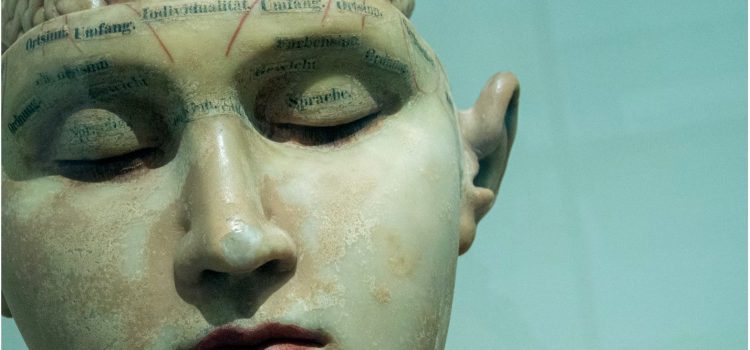

This article is an excerpt from the Shortform book guide to "The Psychology Book" by Catherine Collin, Nigel Benson, et al.. Shortform has the world's best summaries and analyses of books you should be reading.
Like this article? Sign up for a free trial here.
Who began behaviorism experiments? What animals were commonly used in these experiments?
Behaviorism is the study of why people and animals behave the way they do and how they learn. Psychologists often used dogs, cats, and rats to examine behavior because it yielded better results than a philosophical approach.
Keep reading to learn more about certain behaviorism experiments that changed the face of psychology.
Behaviorism: Studying the Mind by Observing Behavior
The authors of The Psychology Book explain that many researchers felt that the best way to analyze the human mind was through a person’s behavior. Behavior was appealing to study because it was observable and could therefore be studied in experiments. American psychologists considered behaviorism experiments to be a more scientific approach to the field than the philosophical analysis of consciousness. Below, we’ll discuss some of the most important experiments and ideas that shaped the field of behaviorism.
(Shortform note: Behaviorism remains a major field of study in psychology, but it has many critics. Despite the view many had of behaviorism as a scientific and objective approach to psychology, some have suggested that the controlled variables and artificial environments in which such experiments take place lead to behaviors that humans wouldn’t normally perform. Others suggest that behaviorism discounts the role of emotions, motivations, and the unconscious mind.)
Stimulus-Response Theory
According to the authors, some of the earliest and most famous behaviorist experiments were Russian-Soviet scientist Ivan Pavlov’s experiments with dogs, which established the concept of classical conditioning, and more broadly, the stimulus-response theory.
In his experiments, Pavlov measured how much dogs salivated when they were being fed. He then exposed them to a neutral stimulus—such as a ringing bell—just before offering them food and discovered that, over time, the dogs began salivating in response to the neutral stimulus. He had conditioned a response (salivation) in the dogs by pairing an unconditioned stimulus (giving the animal food) with a neutral stimulus (ringing a bell). This phenomenon was termed classical conditioning and led to the idea that behavior is learned through a creature’s interaction with its environment.
(Shortform note: Pavlov’s experiments are well-known, but they’re often misinterpreted to mean that classical conditioning only relates to a physiological response to a stimulus (such as salivating). In fact, a conditioned response can also be an emotion or a preference. For example, if you have several bad experiences with public speaking, you may start to feel fear at the sight of large groups of people because of the association between that and your negative experiences.)
The Law of Effect
Around the same time, American psychologist Edward Thorndike was studying how certain behaviors become more prominent than others depending on the results of those behaviors. Based on his experiments with cats, Thorndike proposed the Law of Effect, which states that a behavior that results in a reward is more likely to be repeated than a behavior that doesn’t. This idea formed the foundation of reinforcement learning theory—the theory that the outcome of a creature’s behavior determines how likely that creature is to repeat the behavior.
(Shortform note: Thorndike developed his theory of the Law of Effect in part because he took issue with the idea of classical conditioning as the sole means of learning. Because classical conditioning is involuntary, he felt it didn’t fully encompass the ways in which creatures could actively learn, so he developed a theory that could explain that type of learning.)
Operant Conditioning and Negative Reinforcement
The authors say that American psychologist B.F. Skinner’s ideas aligned more with Thorndike’s than with Pavlov’s. His experiments found that behaviors were more driven by the possible consequences of an action than by a stimulus preceding it. He designed an experiment in which rats were placed into a box where they could press a lever to receive food. As they learned the positive consequence (called positive reinforcement) of the lever-pressing, they altered their behavior and began pressing the lever more.
In later experiments, Skinner added an electric grid to the bottom of the box, which would turn off when the rats pressed the lever. Removing a negative stimulus in response to a behavior is called negative reinforcement (this is different from punishment, which is the application of a negative stimulus in response to a behavior). Skinner gave the name operant conditioning to this phenomenon of altering behavior in response to positive or negative reinforcement, and he found that either form of reinforcement was a more effective means of shaping behavior than punishment.
(Shortform note: Operant conditioning is an external method of shaping behavior, but it doesn’t account for intrinsic motivation—the internal drive to repeat a behavior simply because the behavior is enjoyable. Operant conditioning involves applying extrinsic—or external—rewards and punishments to shape behavior, but research suggests that extrinsic rewards don’t increase intrinsic motivation and may in fact decrease it. This led psychologists to develop the self-determination theory, which suggests that the factors involved in intrinsic motivation aren’t external rewards but are instead feelings of autonomy, competence, and relatedness.)

———End of Preview———
Like what you just read? Read the rest of the world's best book summary and analysis of Catherine Collin, Nigel Benson, et al.'s "The Psychology Book" at Shortform.
Here's what you'll find in our full The Psychology Book summary:
- Psychology 101 without the classrooms and dry lectures
- A look at the various fields of psychology and how they've changed
- Context, criticisms, and limitations of certain theories






